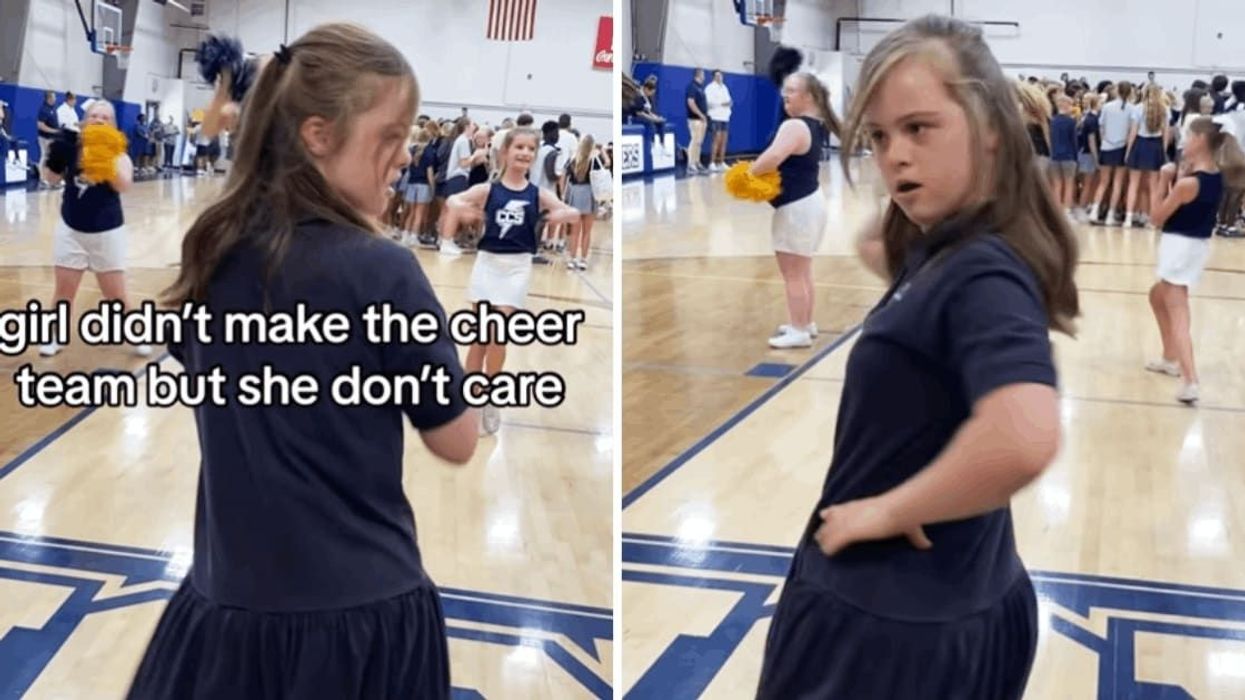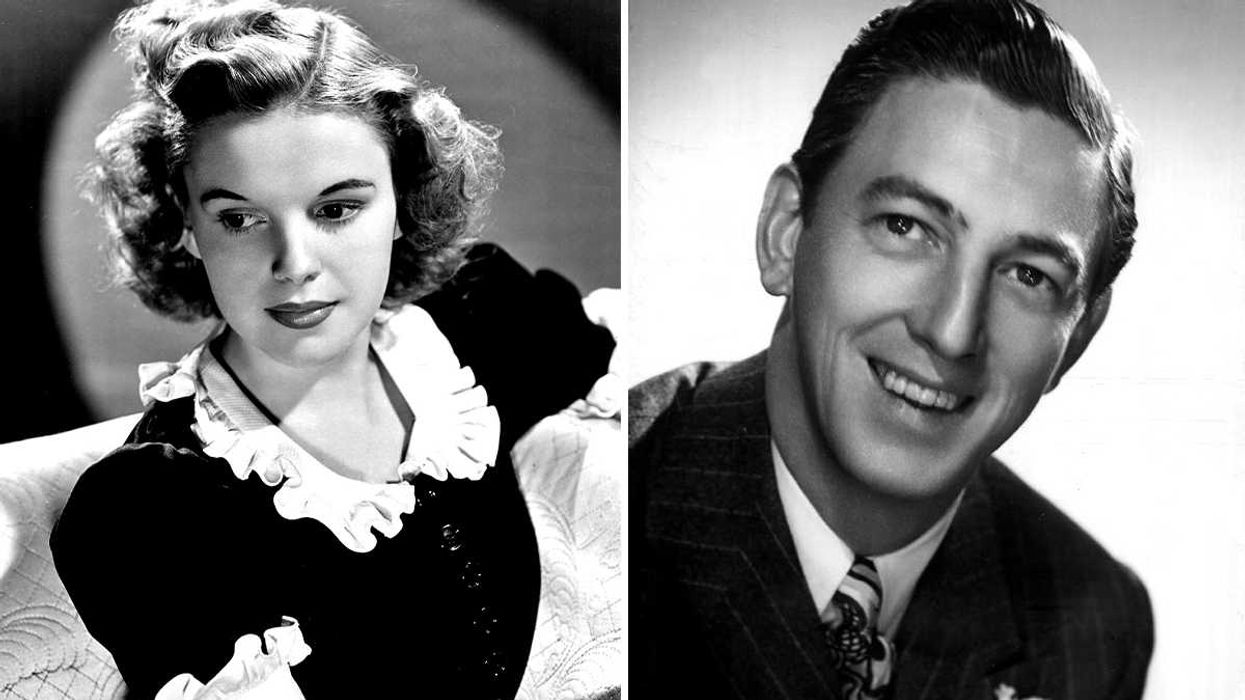She depicts a childlike charm. Her globular eyes are full of cheerful spirit. And her manner, totally playful. Her Instagram bio reads a quote by Karen Gaffney, a TEDx Speaker and Advocate for People with Disabilities, “I have one chromosome more than you.” But more than all these inspiring elements about her, what made her turn into a viral cheerleading star is an instance where she got rejected for a cheerleading program. Emmie Tallent, 13, with Down syndrome, was evicted from the cheerleading team of her school based in Chattanooga, Tennessee. However, a few days later from this program, Emmie’s elder sister Sydnee posted a clip of her on Instagram where she showed how Emmie was performing the routine off the court, absolutely perfectly.
The video shows Emmie in a black dress dancing off the court while the other children in sports dresses are cheering in the school’s gymnasium, black and yellow pompoms flashing and bobbing in their hands. The clip depicts young Emmie performing the moves of the cheerleading squad with so much confidence that ended up inspiring many people, including her sister. Her 22-year-old sister Sydnee applauded the little one’s spirit in the video’s caption. “I aspire to have an ounce of her confidence,” she wrote. The video has crossed over three million views and over 87000 likes. Continuing her praise for Emmie, Sydnee explained in the caption how, at the same time, it was quite reasonable for the school team to not have Emmie. She writes, “The team did not have a lot of spots and even neurotypical girls (who were much better than Emmie) didn’t make it! She also can be super stubborn and not listen sometimes. Emmie’s school is super, super supportive, but there are hard decisions that have to be made sometimes. Emmie is still happy cheering with them at home games and my mom is secretly happy that she doesn’t have to drive my sister to tons of cheer stuff.” Adding to it, she said that there was great scope for Emmie to become a good cheerleader in the future, “Emmie takes gymnastics and dance and she loves it. I’m sure in the future Emmie will make cheer somewhere, but today she’s perfectly happy as she is!”
After Emmie’s clip caught the public buzz, Emmie and Sydnee’s mother, Lisa Tallent, told PEOPLE.com that the first time Emmie had been told that she was not going to be a part of the cheerleading team, Emmie couldn’t comprehend what had. “She didn’t understand even after the coach explained it and I explained it. She just kept repeating ‘I’m on the team!’" Once Emmie accepted that she wouldn’t be a part of the squad this time, Emmie began to feel torn apart. “I think it didn’t set in until about a week later when we were talking about the upcoming game and she started tearing up,” Sydnee said to PEOPLE.com. Lisa also said that Emmie had been a part of the cheerleading squad since kindergarten. She spent fourth and fifth grades in the cheerleading camp and therefore can pick up the moves and routine very quickly, which is what happened on the day of the game.
Talking about the clip she captured while Emmie was performing her moves off the stadium ground, Sydnee says, “I’ve always wanted to share Emmie’s humor and positivity with others. There are a lot of people who have no exposure or experience with people with special needs and it can make them close-minded. I wanted to give a little piece of Emmie out to the world so those people can see the joy that comes with someone with special needs.” Sydnee also said that her sister was a lesson in self-esteem and confidence for other people. The Instagram clip of this instance received tons of praising comments from people. Most of them wished Emmie well and said that it was all good as long as Emmie was happy and having fun.



















 Mushrooms containing psilocybin.Photo credit:
Mushrooms containing psilocybin.Photo credit:  Woman undergoing cancer treatments looks out the window.Photo credit:
Woman undergoing cancer treatments looks out the window.Photo credit:  Friend and patient on a walk.Photo credit:
Friend and patient on a walk.Photo credit: 





